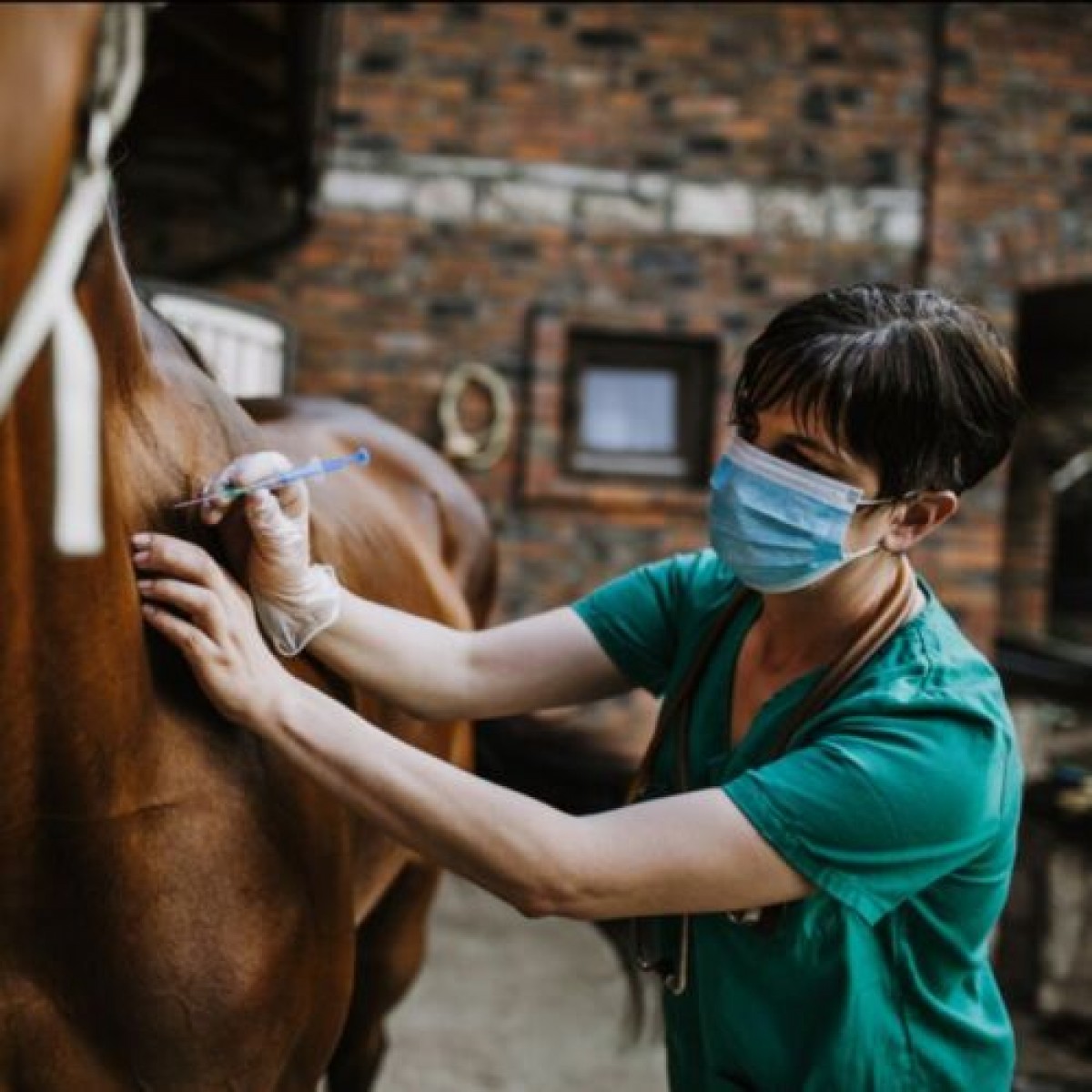Aservo®Equihaler® — New Hope for Equine Asthma Patients
by Jenny Alonge
Many names describe equine airway disease, including recurrent airway obstruction (RAO), allergic airway disease, small airway disease, and inflammatory airway disease (IAD), but all can be categorized as equine asthma. While these conditions are often not curable, if managed correctly, horses affected by equine asthma can lead normal lives, and possibly return to previous athletic performance levels. In April 2020, the Food and Drug Administration’s Center for Veterinary Medicine (FDA-CVM) approved a new prescription drug, Aservo EquiHaler, to help manage equine asthma.
Equine asthma
Recurrent airway obstruction (RAO), also known in layman’s terms as heaves, and inflammatory airway disease (IAD) are the current accepted names for equine conditions that can be categorized as equine asthma.
- Recurrent airway obstruction — This condition is characterized by bronchoconstriction, mucous production, and bronchospasm. Allergic and inflammatory components contribute to the disease process. The most common allergic triggers include mold, dust, and endotoxins present in hay and straw, with the highest prevalence in stabled horses fed hay. The most common signs are chronic cough, nasal discharge, exercise intolerance, and respiratory difficulty. Affected horses will usually exhibit an increased resting respiratory rate. The classic heave line develops along the ribs’ bottom edge, when the abdominal muscles hypertrophy, because they are assisting in breathing. Bronchoalveolar lavage performed on these horses reveals neutrophils.
- Inflammatory airway disease — This condition is characterized by decreased exercise performance and mostly affects young, athletic horses. IAD is typically not caused by allergens. Endotoxins, beta-glucans, mites, and ammonia gas from urine can cause significant lung inflammation. In the initial stages, the only sign is decreased performance, but as the disease progresses, coughing and nasal discharge may be seen. At rest, these horses exhibit a normal respiratory rate. Bronchoalveolar lavage performed on these horses reveals neutrophils, mast cells, or both.
Aservo EquiHaler’s role in treating equine asthma
Aservo EquiHaler is a ciclesonide inhalation spray packaged in a non-pressurized metered dose inhaler and drug cartridge combination. The ciclesonide solution is 30 mg/dL. The prodrug ciclesonide is enzymatically converted to the pharmacologically active metabolite desisobutyrylciclesonide (des-ciclesonide), a glucocorticoid, following inhalation. The drug is distributed deep in the lung tissue by the Soft Mist™ technology, which creates a fine medical mist. Des-ciclesonide possesses anti-inflammatory properties that are expressed by exerting inhibitory activities against numerous cell types, including mast cells, eosinophils, basophils, lymphocytes, macrophages, and neutrophils. Pro-inflammatory mediators, such as histamine, eicosanoids, leukotrienes, and cytokines, are also affected. The drug cartridge contains the ciclesonide solution, and the inhaler dispenses the spray into the horse’s nostril. The nostril adaptor is anatomically designed to fit inside the horse’s nose, facilitating administration. Each cartridge contains 140 actuations (i.e., puffs) and should last for 10 days. Each actuation releases 343 mcg ciclesonide. Once opened, the medication should be used in 12 days.
Aservo EquiHaler’s effectiveness was evaluated in a randomized, double-blind field study involving 320 horses who randomly received either Aservo EquiHaler or the solution not including ciclesonide. The first phase involved a 10-day evaluation to determine Aservo Equihaler’s effectiveness and safety compared with the control. Modifications to the horses’ environment were not allowed during the first phase. The second phase involved a 90-day evaluation to determine the drug’s safety during repeated use. A weighted clinical score (WCS) was calculated for each horse during the first phase. Nine clinical parameters were considered when calculating this score—respiratory rate, nasal discharge, nasal flaring, abdominal lift, tracheal sounds, bronchial tones, crackles, wheezes, and cough. The maximum score was 23, and a horse had to score higher than 11 to participate in the study. A horse was considered a treatment success if their day 10 WCS was less than 14, and their WCS dropped by at least 30 percent between day zero and day 10. Fifty-two percent of the horses receiving Aservo EquiHaler were deemed a treatment success, with only 33 percent of horses receiving the control considered a treatment success. These results demonstrate that Aservo EquiHaler is effective for managing equine asthma in horses.
Potential adverse effects seen in horses receiving Aservo EquiHaler
Aservo EquiHaler’s safety was evaluated during the field study’s second phase. One hundred and eight horses who participated in phase one were also enrolled in phase two and medicated for 90 days. The most common adverse reaction was coughing, either during or immediately following inhalation. Other adverse effects included:
- Nasal discharge
- Leukocytosis or neutrophilia
- Sneezing
- Nasal irritation or bleeding
- Increase in serum sorbitol dehydrogenase
- Hives
- Laminitis
Three horses developed laminitis during the study, but two of these horses had prior laminitic episodes. This medication should be used cautiously in horses who have had prior laminitic episodes, and in horses already at high risk for laminitis. Aservo EquiHaler’s safety has not been evaluated in other equids, such as donkeys or mules, or in pregnant or lactating mares. Since glucocorticoid treatment can worsen existing bacterial, fungal, or viral infections, secondary infections should be ruled out before administering Aservo EquiHaler.
Aservo EquiHaler is best used in addition to other treatment modalities and environmental management strategies, such as increasing a horse’s time at pasture, using dust-free bedding, and soaking hay before feeding. Equine asthma is a complicated condition, requiring extensive diagnostics to pinpoint the cause, but Aservo EquiHaler provides one more treatment method for this troublesome disease.


.png)










List
Add
Please enter a comment